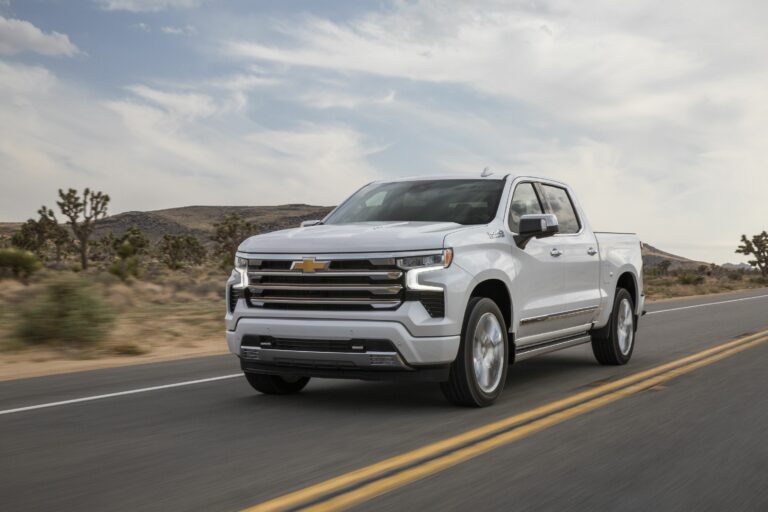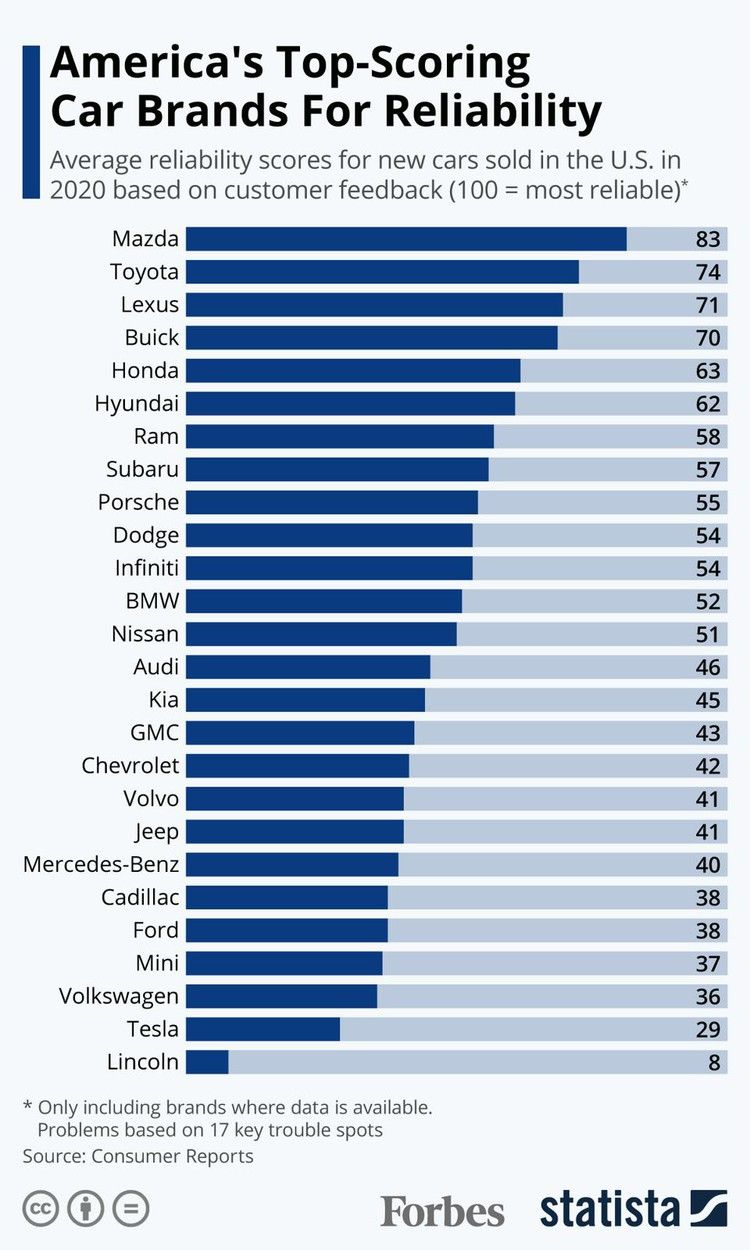One Of Detroit’s Big 3 Car Brands: A Deep Dive into Ford Motor Company
One Of Detroit’s Big 3 Car Brands: A Deep Dive into Ford Motor Company cars.truckstrend.com
An Engaging Introduction: The Enduring Spirit of American Ingenuity
When one speaks of "Detroit’s Big 3," a trifecta of automotive giants immediately comes to mind: General Motors, Stellantis (formerly Chrysler), and the venerable Ford Motor Company. These titans have not only shaped the landscape of American industry but have also profoundly influenced global transportation, culture, and innovation for over a century. Among them, Ford stands as a monumental emblem of American ingenuity, mass production, and a relentless pursuit of progress.
One Of Detroit’s Big 3 Car Brands: A Deep Dive into Ford Motor Company
Founded by Henry Ford in 1903, the company revolutionized the industrial world with the introduction of the assembly line and the Model T, making automobiles accessible to the masses and fundamentally altering daily life. Ford Motor Company is not merely a manufacturer of vehicles; it is a cornerstone of economic development, a pioneer of modern manufacturing processes, and a symbol of democratic mobility. From its foundational impact on the 20th century to its ambitious pivot towards an electrified and autonomous future, Ford continues to embody the spirit of innovation that defined Detroit and indeed, the American dream itself. This comprehensive article will delve into the multifaceted world of Ford, exploring its rich history, diverse product lines, commitment to sustainability, and the practical considerations for anyone engaging with this iconic brand.
The Enduring Legacy of Ford Motor Company: History, Values, and Global Impact
Ford Motor Company’s narrative is inextricably linked with the evolution of modern industry. Its journey began in a small converted wagon factory in Detroit, Michigan, with a vision to build affordable, reliable vehicles.
Key Historical Milestones:
- 1903: Founding: Henry Ford establishes the Ford Motor Company, backed by 12 investors.
- 1908: The Model T: The introduction of the "Tin Lizzie" marked a paradigm shift. Its simplicity, durability, and affordability made it an instant success.
- 1913: The Moving Assembly Line: Ford pioneered the world’s first moving assembly line for mass production at its Highland Park plant. This innovation drastically reduced production time and costs, allowing Ford to lower the Model T’s price, making it accessible to average American families. This wasn’t just an automotive innovation; it was a revolution in industrial efficiency that impacted industries worldwide.
- 1914: The $5 Day: Henry Ford doubled the daily wage for his workers to $5 (a significant sum at the time) for an 8-hour day. This bold move was not purely altruistic; it was a strategic decision to reduce employee turnover, increase productivity, and create a consumer base for his products among his own workers.
- Post-War Expansion: After contributing significantly to the Allied war effort during WWII (producing bombers, tanks, and jeeps), Ford expanded globally, establishing manufacturing plants and sales networks across continents.
- Modern Era: Through economic downturns, energy crises, and technological shifts, Ford has consistently adapted, from the development of iconic vehicles like the Mustang and F-Series trucks to its current focus on electric vehicles (EVs) and connected technologies.

Core Values and Philosophy:
Ford’s enduring success is built upon a foundation of core values:
- Innovation: A relentless drive to push boundaries, from manufacturing processes to vehicle design and powertrain technology.
- Accessibility: A commitment to providing mobility solutions that are within reach for a wide range of consumers.
- Quality and Durability: A long-standing reputation for building tough, reliable vehicles, particularly exemplified by the F-Series trucks.
- Customer Focus: Evolving products and services to meet changing consumer needs and preferences.
- Sustainability: Increasingly prioritizing environmental responsibility through electrification and sustainable manufacturing practices.
Ford’s global impact extends beyond vehicle sales. It fosters vast ecosystems of suppliers, dealerships, and service providers, creating millions of jobs worldwide and contributing significantly to national economies.
Ford’s Diverse Portfolio: Driving Every Segment
One of Ford’s greatest strengths lies in its comprehensive vehicle lineup, catering to an incredibly broad spectrum of consumer and commercial needs. This diversity ensures its relevance across various markets and demographics.
Key Vehicle Categories and Noteworthy Models:
-
Trucks (The F-Series Dominance):
- Overview: The F-Series, particularly the F-150, has been America’s best-selling truck for over 45 consecutive years and America’s best-selling vehicle for over 40 years. This segment is Ford’s cash cow and a pillar of its brand identity.
- Models: F-150 (light-duty), Super Duty (F-250, F-350, F-450 for heavy-duty work), Ranger (mid-size pickup).
- Innovation: Continuously updated with advanced towing tech, pro power onboard generators, and the revolutionary F-150 Lightning electric pickup.
-
SUVs and Crossovers:
- Overview: Reflecting the global shift towards utility vehicles, Ford offers a vast array of SUVs from compact crossovers to large family haulers.
- Models: Escape (compact), Bronco Sport (compact rugged), Bronco (off-road icon), Edge (mid-size), Explorer (mid-size family), Expedition (full-size).
- Benefits: Offer versatility, ample cargo space, elevated driving position, and often available all-wheel drive, appealing to families and adventurers alike.
-
Performance Vehicles:
- Overview: Ford maintains a strong presence in the performance segment, catering to enthusiasts with iconic models.
- Models: Mustang (the quintessential American pony car, now with an electric Mach-E variant), GT (supercar).
- Appeal: Blend heritage with cutting-edge performance technology, offering exhilarating driving experiences.
-
Electric Vehicles (EVs):
- Overview: Ford is making aggressive investments in electrification, seeing it as the future of mobility.
- Models: Mustang Mach-E (electric SUV), F-150 Lightning (electric pickup), E-Transit (electric commercial van).
- Strategic Importance: These models are crucial to Ford’s long-term sustainability goals and market competitiveness. They combine traditional Ford attributes with zero-emission powertrains and advanced digital features.
-
Commercial Vehicles:
- Overview: Ford is a leader in the commercial vehicle sector, providing essential tools for businesses and fleets.
- Models: Transit (full-size van), Transit Connect (compact van), Super Duty Chassis Cab and Cutaway models for specialized upfitting.
- Utility: Designed for durability, cargo capacity, and specific business applications, from delivery services to construction.
This diverse product strategy allows Ford to capture market share across nearly every major segment, ensuring a robust and resilient business model that can adapt to evolving consumer preferences and economic cycles.
Innovation and Sustainability: Paving the Road Ahead
Ford’s future hinges on its ability to innovate and lead in the transition to a more sustainable automotive industry. The company is committing billions of dollars to research and development, particularly in the areas of electrification, connectivity, and autonomous driving.
How Ford Innovates:
- Strategic Investments: Ford is investing heavily in new technologies, including battery production (e.g., BlueOval City in Tennessee, BlueOval SK battery plants in Kentucky).
- Partnerships: Collaborating with tech companies, startups, and other industry players to accelerate development in areas like autonomous driving (e.g., Argo AI partnership, though recently restructured) and advanced manufacturing.
- Software and Connectivity: Developing sophisticated in-vehicle software (FordPass, Ford SYNC), over-the-air updates, and connected services to enhance the ownership experience and create new revenue streams.
- Design Thinking: Adopting a human-centered design approach to develop intuitive and user-friendly technologies.
Focus on Electrification:
Ford’s "Model e" division is spearheading its EV transformation. The strategy involves:
- Scalable EV Platforms: Developing flexible platforms to produce a wide range of electric vehicles efficiently.
- Battery Production: Securing raw materials and establishing domestic battery manufacturing capabilities to control supply chains and costs.
- Charging Infrastructure: Collaborating with charging networks and developing solutions like the FordPass Charging Network to ease range anxiety for EV owners.
- Customer Education: Educating consumers about the benefits and practicalities of EV ownership.
Sustainability Initiatives:
Beyond EVs, Ford is committed to broader environmental goals:
- Carbon Neutrality: Aiming for carbon neutrality across its global facilities, logistics, and supply chain by 2050.
- Circular Economy: Exploring recycling and reuse of materials, particularly for EV batteries, to minimize waste.
- Sustainable Manufacturing: Implementing energy-efficient processes and renewable energy sources in its plants.
These forward-looking strategies are not just about environmental responsibility; they are crucial for Ford’s long-term competitiveness and relevance in a rapidly changing global automotive landscape.
Navigating the Challenges and Opportunities
Even a company as established as Ford faces significant challenges in the modern automotive world, alongside immense opportunities.
Potential Challenges:
- Intense Competition: The automotive market is highly competitive, with established players and new entrants (especially EV startups) vying for market share.
- Supply Chain Volatility: Global events (like the semiconductor shortage) have highlighted vulnerabilities in supply chains, impacting production and profitability.
- Economic Headwinds: Inflation, interest rate hikes, and potential recessions can dampen consumer demand for big-ticket items like vehicles.
- Technological Pace: The rapid evolution of EV, autonomous, and software technologies requires continuous, massive investment and swift adaptation.
- Labor Relations: Navigating complex relationships with labor unions (like the UAW in the U.S.) can lead to production disruptions and increased costs.
- Regulatory Environment: Meeting increasingly stringent emissions and safety regulations worldwide requires significant R&D and manufacturing adjustments.
Solutions and Opportunities:
- Strategic Restructuring: Ford’s creation of distinct business units (Ford Blue for ICE, Model e for EVs, Ford Pro for Commercial) aims to improve agility, focus, and profitability.
- Vertical Integration: Investing in battery production and software development to gain greater control over critical components and intellectual property.
- Global Market Diversification: While strong in North America, Ford continues to adapt its strategy for key international markets like Europe and China, often through partnerships.
- Leveraging Brand Strength: Ford’s brand loyalty, especially for trucks and performance vehicles, provides a strong foundation for new product introductions (e.g., the F-150 Lightning benefiting from the F-150’s reputation).
- New Revenue Streams: Exploring software subscriptions, connectivity services, and commercial fleet management solutions to diversify revenue beyond vehicle sales.
- Focus on Profitability: Prioritizing profitable segments and models, and streamlining operations to improve margins.
Ford’s ability to navigate these complexities while seizing opportunities will determine its trajectory in the coming decades.
Practical Advice for Consumers and Enthusiasts
For those considering a Ford vehicle or simply interested in the brand, here’s some practical advice:
- Research Thoroughly: Ford offers a vast lineup. Understand your specific needs (e.g., towing capacity, passenger space, fuel efficiency, electric range) before narrowing down models. Read reviews, compare trims, and utilize Ford’s online configurator.
- Test Drive Multiple Models: Don’t just test drive one car. If you’re considering an SUV, try a few different Ford models (e.g., Escape vs. Bronco Sport vs. Explorer) to feel the differences in size, handling, and features. If considering an EV, pay attention to charging infrastructure in your area.
- Understand Total Cost of Ownership: Beyond the purchase price, consider fuel/charging costs, insurance, maintenance, and potential resale value. Ford vehicles generally hold their value well, especially popular trucks and SUVs.
- Explore FordPass and Connectivity: FordPass is Ford’s app that connects you to your vehicle for remote start, lock/unlock, vehicle health alerts, and charging station finding for EVs. Familiarize yourself with SYNC infotainment features during your test drive.
- Consider Certified Pre-Owned (CPO): For value, a Ford CPO vehicle can offer peace of mind with a factory-backed warranty and thorough inspection, often at a lower price than new.
- Join the Community: For enthusiasts, Ford has a vibrant community, especially around models like the Mustang, Bronco, and F-Series. Online forums, clubs, and events can enhance the ownership experience and provide valuable insights.
- Stay Informed on EVs: If you’re interested in an electric Ford, keep up-to-date with battery technology, charging standards, and government incentives (tax credits, rebates) which can significantly impact the purchase cost.
Ford’s commitment to innovation means new features and technologies are constantly being integrated. Staying informed will help you make the best decision for your mobility needs.
Representative Ford Vehicle Pricing (Starting MSRP, Subject to Change)
It’s important to note that vehicle prices vary significantly based on trim level, options, region, and market conditions. The table below provides a representative sample of starting Manufacturer’s Suggested Retail Prices (MSRPs) for popular Ford models as of late 2023/early 2024. These are entry-level prices and do not include destination charges, taxes, or dealer-added accessories.
| Vehicle Category | Model Name | Starting MSRP (Approx. USD) | Key Features / Notes |
|---|---|---|---|
| Trucks | Ford F-150 | $36,500 | America’s best-selling truck; diverse powertrains. |
| Ford F-150 Lightning | $50,000 | All-electric F-150; Pro Power Onboard. | |
| Ford Ranger | $32,700 | Mid-size pickup, agile and capable. | |
| SUVs/Crossovers | Ford Escape | $29,500 | Compact SUV, available hybrid. |
| Ford Bronco Sport | $31,300 | Rugged compact SUV, off-road capable. | |
| Ford Bronco | $39,100 | Iconic off-road SUV, removable roof/doors. | |
| Ford Explorer | $37,000 | Mid-size family SUV, 3-row seating. | |
| Ford Mustang Mach-E | $43,000 | All-electric performance SUV. | |
| Performance | Ford Mustang EcoBoost | $31,000 | Classic pony car, accessible performance. |
| Commercial | Ford Transit Connect | $36,000 | Compact commercial van, versatile for businesses. |
| Ford E-Transit | $54,000 | All-electric commercial van. |
Note: Prices are approximate and can fluctuate due to market demand, incentives, and model year updates. Always check Ford’s official website or a local dealer for the most current pricing.
Frequently Asked Questions (FAQ) about Ford Motor Company
Q1: What makes Ford one of Detroit’s "Big 3"?
A1: The term "Big 3" refers to the three largest and most influential American automakers historically headquartered in or around Detroit: Ford, General Motors, and Stellantis (which includes brands like Chrysler, Dodge, Jeep, and Ram). They have dominated the U.S. automotive market for decades and are significant global players.
Q2: Is Ford still an American-owned company?
A2: Yes, Ford Motor Company remains an American-owned company, publicly traded on the New York Stock Exchange. The Ford family maintains a significant voting stake in the company.
Q3: What is Ford’s strategy for electric vehicles (EVs)?
A3: Ford has committed over $50 billion to its EV strategy by 2026. This includes developing new EV platforms, investing in battery production (e.g., BlueOval City), and launching popular models like the Mustang Mach-E, F-150 Lightning, and E-Transit. Their goal is to scale EV production significantly and become a leader in the electric transition.
Q4: How reliable are Ford vehicles?
A4: Ford vehicles generally have a reputation for reliability, particularly their F-Series trucks. Like all manufacturers, reliability can vary by model and year. Recent models, especially those with new technologies, are constantly being refined. It’s always advisable to check independent reliability ratings (e.g., Consumer Reports, J.D. Power) for specific models you are interested in.
Q5: What is Ford’s commitment to sustainability beyond EVs?
A5: Beyond electric vehicles, Ford aims to achieve carbon neutrality across its global operations, logistics, and supply chain by 2050. This involves using renewable energy in manufacturing, reducing waste, recycling materials, and working with suppliers to reduce their environmental footprint.
Q6: Does Ford still make sedans?
A6: In the North American market, Ford has largely phased out traditional sedans (like the Focus and Fusion) to focus on more profitable and popular trucks, SUVs, and commercial vehicles. However, the iconic Mustang remains a strong sedan/coupe offering, and Ford continues to sell sedans in other international markets where demand remains high.
Concluding Summary: Driving into the Future with Ford
Ford Motor Company, a foundational pillar of Detroit’s automotive legacy, has consistently demonstrated its capacity for transformation and resilience. From the revolutionary assembly line and the democratizing Model T to its current ambitious charge into the electrified and digitally connected future, Ford has remained a dominant force in global mobility.
Its diverse portfolio, spanning from the ubiquitous F-Series trucks to cutting-edge electric vehicles like the F-150 Lightning and Mustang Mach-E, showcases a brand that understands its heritage while aggressively pursuing innovation. While challenges like supply chain volatility and intense competition persist, Ford’s strategic investments in electrification, software, and sustainable manufacturing position it strongly for the decades ahead.
For consumers, Ford offers a breadth of choices, embodying reliability, utility, and increasingly, cutting-edge technology. For enthusiasts, it represents a rich history of performance and American ingenuity. As the world transitions to new forms of mobility, Ford continues to drive forward, proving that the spirit of innovation born in Detroit more than a century ago remains vibrant and essential to shaping the roads of tomorrow.





